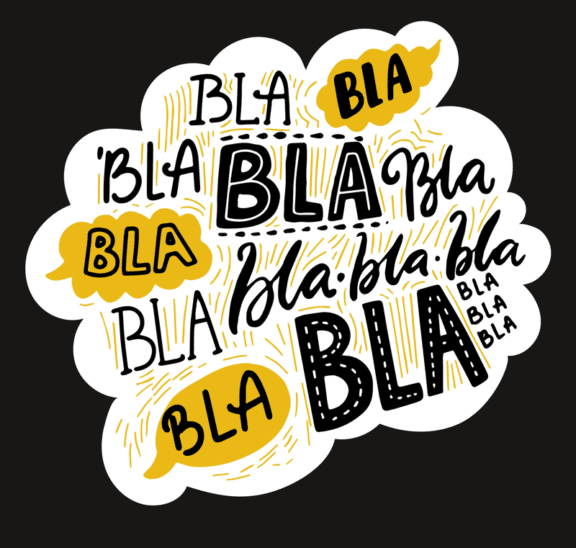It is so easy to tell when a group is tired and jaded of the typical form-a-circle-and-answer-a-few-questions debrief strategy.
(Ugh, I think I was bored just writing that sentence.)
Responses – if you get any at all – often peddle the tried and true path of what I refer to as ‘buzz words.’ You know, answers to questions the group thinks you want to hear, such as “teamwork,” “communication,” “trust” and “cooperation” without giving them too much thought, and hoping you will move on.
This was never good enough for me, so I needed a remedy.
A Useful Follow-Up
My first knee-jerk reaction was to ask the question a different way. In a world in which most groups know that if they wait long enough, you will give them the answer, this strategy yeilded much the same results.
My second strategy was to follow-up by asking the responders if they could they give me an example of what they just uttered. Gulp! You could almost hear them swallow the bitter pill of accountability. Do this a couple of times, and your group quickly learns that buzz word answers won’t cut it.
This idea worked and it still does, and then I stumbled across a wonderful matrix that was not only fun to use, but provided meaningful practicality to a group’s learning.
Looks Like, Sounds Like & Feels Like
My favourite reflection strategy these days is to present a framework within which my groups can respond – the feels like, sounds like and looks like matrix. This has been really useful in helping groups understand the meaning behind many of the buzz words they know but did not fully comprehend.
For example, if the focus or theme of my activity/program is teamwork, I would invite my group to respond by providing examples of what teamwork looks, sounds and feels like. So, in response to someone uttering a phrase like “we worked well as a team,” I would respond by asking them or the group to tell me what it looked like, or sounded like or felt like, and I would attract the following types of replies:
Looks Like
-
- reaching out to help someone
- waiting one’s turn before talking
- forming a circle
Sounds Like
-
- saying “Thank you for your help”
- saying “I’m sorry for [ enter action ]”
- one person talking at a time
- asking “Can I help you?”
Feels Like
-
- safe
- comfortable
- happy
- productive
In a world filled with 100s of fun, engaging and rewarding reflection techniques, I am still amazed at how few of them are used regularly. This explains why so many groups actively discourage any attempt to debrief or reflect their experiences, ie they are bored out of their brains.
There is nothing intrinsically wrong with forming a circle and asking a set of questions. It is a wholly valid reflection technique.
But…, if this is your only technique, then take a look at some these fun and engaging ways to debrief with your group – while also trying out this fun matrix. I think you and your group will like it.
Browse Fun Reflection Activities

No Props? No Problem!
Get 150+ no-prop games & activities + exclusive 30-day free trial of playmeo. Scan QR codes to view activity videos, leadership tips, etc.

EMOJI Feeling Cards
50+ cards that portray a range of emotions from happy, sad, angry & confused. Ideal for building emotional literacy skills.

Wow, you’ve been busy!
You can open 1 more
activity for free.
Limit resets every 24 hours
or click below to get unlimited access.











I really like this article. As a teacher, doing these type of exercises, I often roll my eyes at the responses, thinking to myself, do they really understand what this is all about? Reflection is often hard with primary aged children and these are great strategies to help them dig deeper.
Dawn, you’re absolutely right – there’s a lot of eye-rolling happening for me too. And yes, applying the matrix to my debriefing and reflection activities has made a big difference, not only to engage my groups more effectively but to help with their transfer of learning. Thanks for sharing.